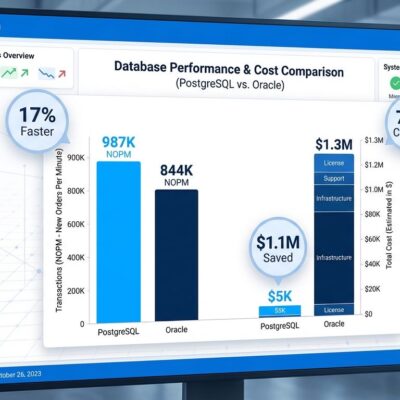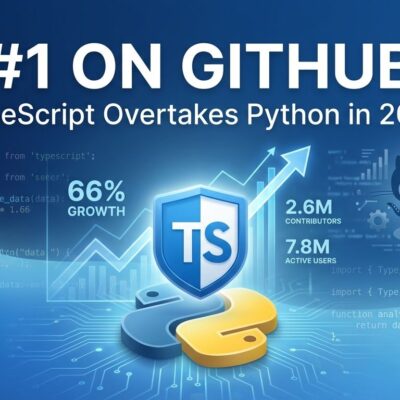
The Linux kernel now supports WebAssembly as a native architecture. The linux-wasm project, trending on GitHub with 738 stars in less than a week, treats WASM like x86, ARM, or RISC-V—as a first-class CPU architecture. This means the kernel can compile to WASM bytecode and run on a WebAssembly runtime, marking WASM’s evolution from browser sandboxing tool to kernel-level execution platform.
This shift matters. WebAssembly started as a security feature for browsers. Now it’s at the kernel level, enabling WASM-based containers that could rival Docker, sandboxed kernel modules that can’t crash your system, and truly cross-platform system code that runs anywhere without recompilation. For systems programmers, this signals WASM’s graduation from niche web technology to universal binary format.
WebAssembly’s Journey From Browser to Kernel
WebAssembly’s trajectory has been remarkably fast for systems software. It launched in browsers in 2017 for safe code execution. By 2019, serverless platforms like Cloudflare Workers and Fastly adopted it to eliminate cold starts. Docker added experimental WASM runtime support in 2023. Now, just eight years after its browser debut, WASM reaches the kernel level.
This isn’t hype—it’s solving real problems at each step. Browsers needed security. Serverless needed instant startup. Edge computing needed tiny runtimes. Now, the kernel needs cross-platform portability and safe extensibility. WASM delivers on all fronts, which explains the rapid adoption despite systems programming’s notorious conservatism.
What Linux Kernel WASM Support Enables
Linux kernel WASM support unlocks three capabilities that weren’t feasible before. First, WASM-native containers skip the OS layer entirely. Traditional Docker stacks an app, OS libraries, container runtime, host kernel, and hardware. WASM containers eliminate the OS libraries layer—just app WASM, runtime, kernel, hardware. The result: smaller images, faster startup, and one image for all architectures.
Second, sandboxed kernel modules solve a decades-old problem. Kernel modules are the leading cause of kernel panics. WASM’s inherent sandboxing means buggy modules can’t crash the kernel. They’re also cross-architecture—write once, load on x86, ARM, or RISC-V without recompilation. Companies like Cosmonic and Fermyon are already betting on WASM containers, validating the commercial potential.
Third, truly cross-platform system utilities become practical. The same WASM binary runs on x86 servers, ARM edge devices, and RISC-V IoT hardware. No architecture-specific builds, no separate container images for each platform. This is “write once, run anywhere” without the Java compromises.
WASM vs eBPF: The Kernel Performance Debate
The systems programming community is divided. WASM advocates argue sandboxed kernel modules are worth any overhead—security beats speed when the alternative is kernel panics. They point out WASM JIT compilation achieves 80-95% of native performance in browsers and serverless contexts. Why not in the kernel?
Skeptics counter that the kernel is the wrong place for WASM. eBPF already provides safe kernel extensions for networking and observability—mature, proven, and faster. Adding WASM introduces complexity where every microsecond matters. The 5-20% performance hit acceptable in browsers becomes a dealbreaker in kernel hot paths.
Here’s the reality: Both sides have valid points. eBPF is production-ready but limited to specific use cases. WASM aims for general-purpose kernel extensions but needs to prove performance is acceptable. The linux-wasm project must benchmark kernel-context performance before this debate settles. Until then, expect fierce arguments from both camps.
Experimental, Not Production-Ready
Despite the excitement, temper expectations. The linux-wasm project is less than a week old with zero production deployments. There’s no distro support, limited tooling, and unaudited security. This is a proof-of-concept showing WASM’s potential direction, not a “deploy today” technology.
Production readiness requires extensive security auditing, kernel-context performance benchmarking, and tooling maturity. Based on similar kernel features like eBPF and io_uring, expect a 2-5 year timeline minimum. The smart approach: watch the project, experiment in development environments, but keep production systems far away for now.
Key Takeaways
- Linux kernel now treats WebAssembly as a native architecture (like x86 or ARM), enabling kernel code to compile to WASM bytecode and run on WebAssembly runtimes
- This unlocks WASM-native containers (lighter than Docker), sandboxed kernel modules (can’t crash the kernel), and cross-platform system utilities (one binary for all architectures)
- The community debates performance trade-offs—WASM’s 80-95% native speed in browsers may not be acceptable in kernel hot paths where every microsecond matters
- eBPF already provides safe kernel extensions for specific use cases (networking, observability), making WASM’s general-purpose approach both promising and potentially redundant
- The linux-wasm project is experimental (less than a week old, 738 GitHub stars) with a 2-5 year timeline to production—watch and experiment, but don’t bet production systems on it yet
WebAssembly’s evolution from browser sandboxing to kernel-level architecture took just eight years—a blink in systems programming time. Whether linux-wasm becomes the foundation for next-generation containers or remains a research curiosity depends on performance benchmarks and security audits yet to come. The trajectory, though, is clear: WASM is becoming the universal binary format, and the kernel is the next frontier.











